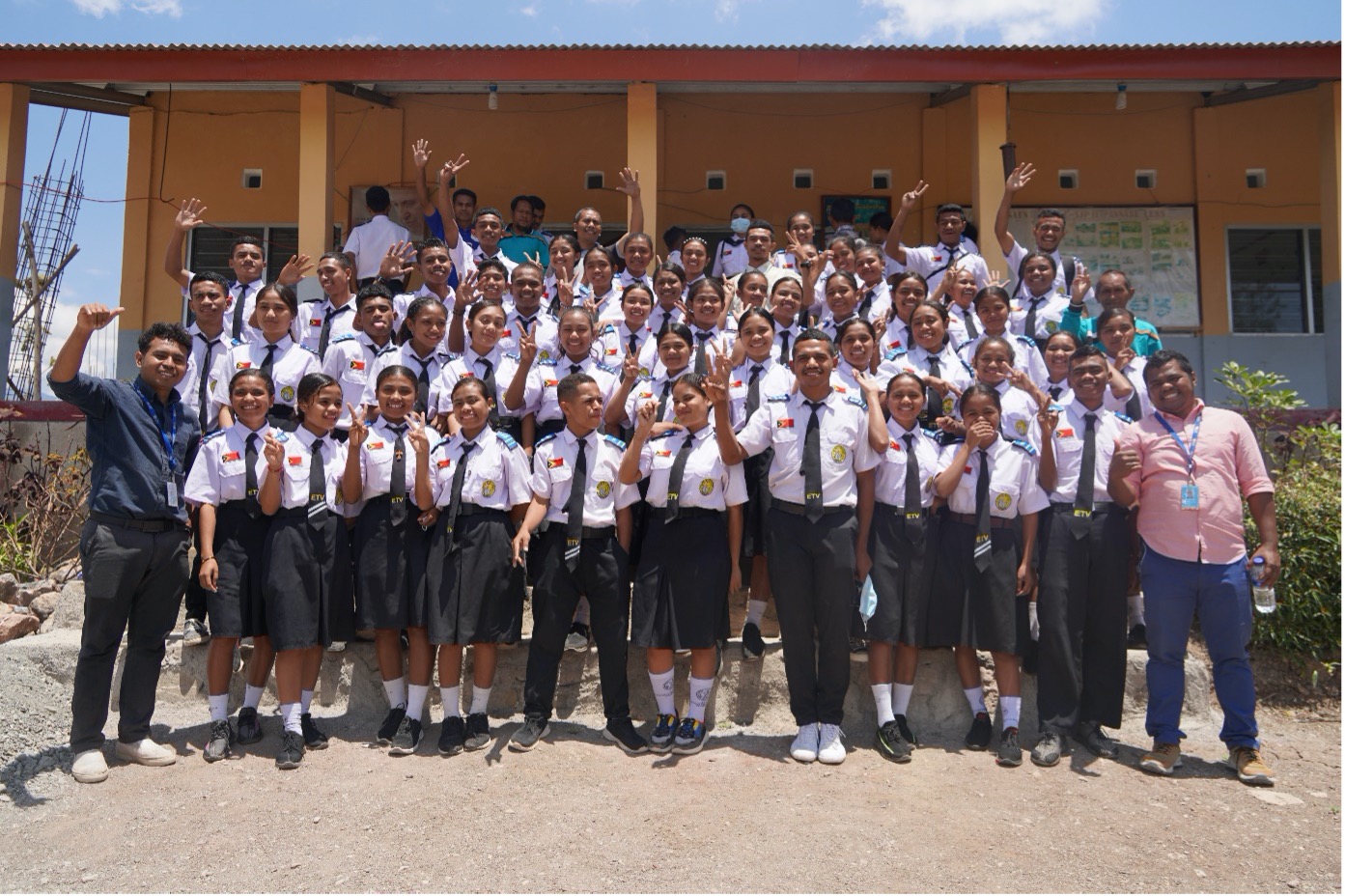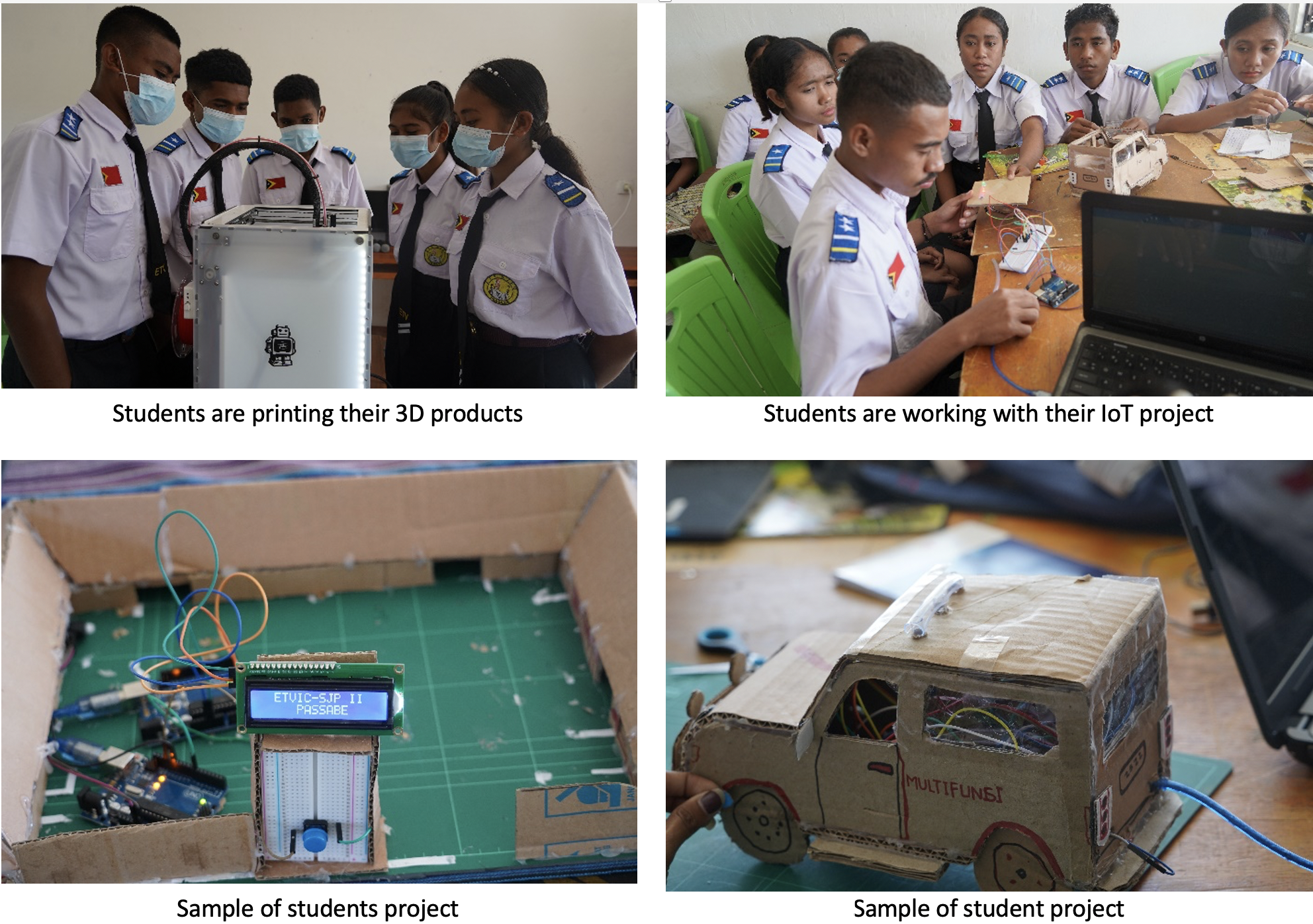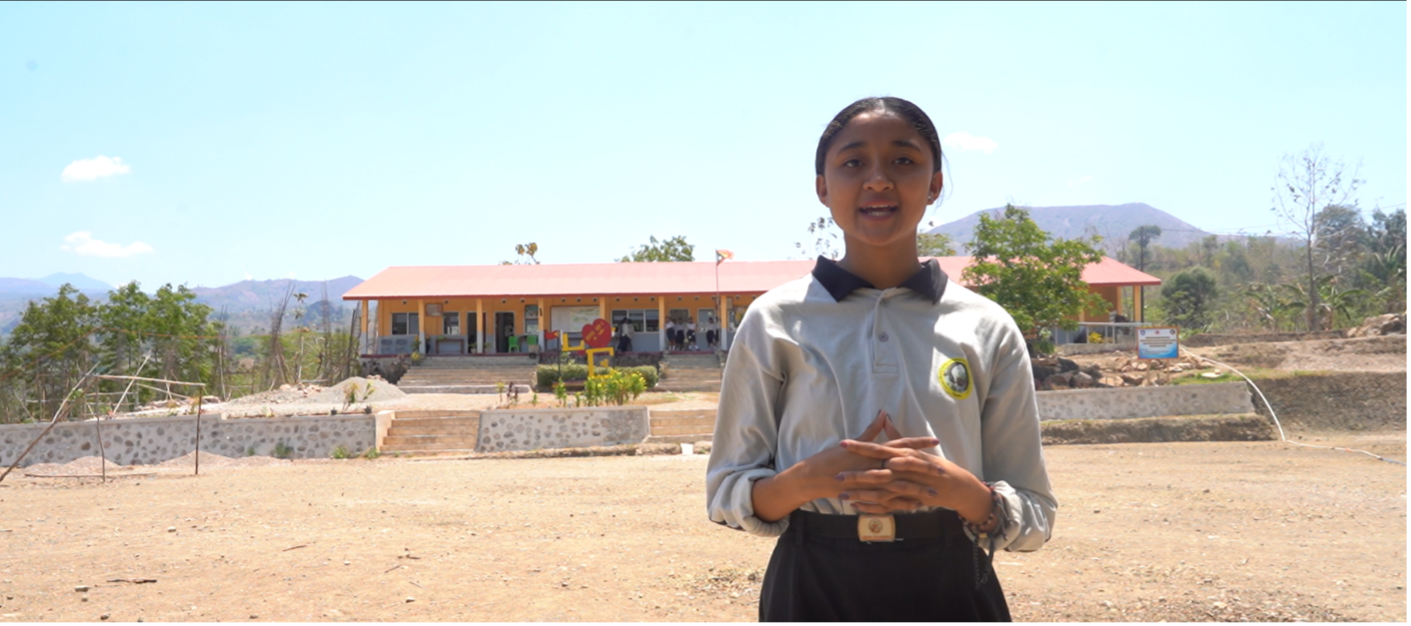Students in the remote area of Timor-Leste learning IoT and 3D printers to devise solutions
November 17, 2023

Group photo of students ETVIC-SJP II
As we live in a digital technology era, addressing the issue of digital inequality in education is now more critical than ever. The rapid growth of technology is fundamentally transforming the way students acquire knowledge, particularly in digital fields like 3D printing and the Internet of Things (IoT). These challenges are especially prominent in remote regions of Timor-Leste, where government and other stakeholders may not be fully aware of these issues.
The lack of access to quality education in these remote areas significantly impedes students' learning processes, depriving them of educational technology tools such as IoT and 3D printers that could serve as catalysts for improving their learning and fostering their ability to create solutions for their communities.
This blog post will delve into the concept of co-creating digital and technological solutions using IoT and 3D printers as tools, which has already yielded remarkable solutions developed by students in remote areas of Timor-Leste.
The co-creation of solutions through technology and innovation training is designed with the exclusive goal of equipping students to become proficient in creating solutions. By the end of this training, students were able to conceive and implement IoT projects utilizing Arduino to tackle pressing social issues spanning diverse fields including water management, home automation, transportation, smart cities, robotics, and automobiles.

Activities with the students
One of the most daunting challenges faced by students in these remote areas is gaining access to quality education, where technology plays a pivotal role as an enabler. These social challenges are not the primary factors deterring students' enthusiasm for learning. The Secondary Technical Vocational School of Saint Joao Paulo II (ETVI-SJPII), established in 2018, had not previously experienced the kind of exclusive training provided by the UNDP Timor-Leste Accelerator Lab. This innovative training approach involves co-creating solutions using technological devices, with students leading the way and receiving support through mentoring programs.
The one-week training proved to be a revelation for students, introducing them to technology and innovation as catalysts for change. This exclusive training offered students a revolutionary approach to learning, igniting their analytical and critical thinking as they grappled with the social challenges facing their community in the remote area of Passabe, Oé-cusse Municipality. Located along the southern coastal border with Indonesia and having limited access to information and technology, such as the Internet of Things (IoT) and 3D printers, the students recognized their potential to greatly enhance their learning experiences by leveraging their resources and adopting modern approaches, ensuring they are not left behind when compared to schools in urban areas.
Merging design skills with IoT devices resulted in some amazing projects that could potentially improve school facilities and create a better learning environment. The challenge students face is the lack of these facilities to support their learning process and design their solutions.
Upon completing the training, students discovered that addressing pressing issues was far more manageable than they had previously imagined. They viewed this training as a departure from traditional learning, which primarily focuses on reading materials, instead allowing them to engage in hands-on projects, such as smart water irrigation systems, home automation, smart transportation, smart cities, and interior lighting. Julivia Gabriela Hau da Cruz, one student representative, commented, "The way we experienced this training was markedly different from our traditional learning process, which primarily emphasizes reading materials." The training places a strong emphasis on collaboratively crafting solutions to address both social and environmental issues. Additionally, it provides opportunities to develop vital soft skills, including teamwork, PowerPoint creation, and pitching skills. Most importantly, the training encourages us to derive enjoyment from the process of creating these projects.

Student representative expressed her view in regards of 3D printer and IoT training
In conclusion, the IoT and 3D printer training represents an exclusive and purposeful package designed to nurture students into future designers and technology enthusiasts. It offers a valuable learning experience that is both enjoyable and innovative, enabling students to develop their abilities and gain a fundamental understanding of design, all while fostering their capacity to create solutions. This training method serves as a motivational force, propelling us beyond our comfort zones and instilling a strong willingness to learn. It broadens our horizons in terms of the learning process and guides our decisions regarding future studies and career paths.

 Locations
Locations